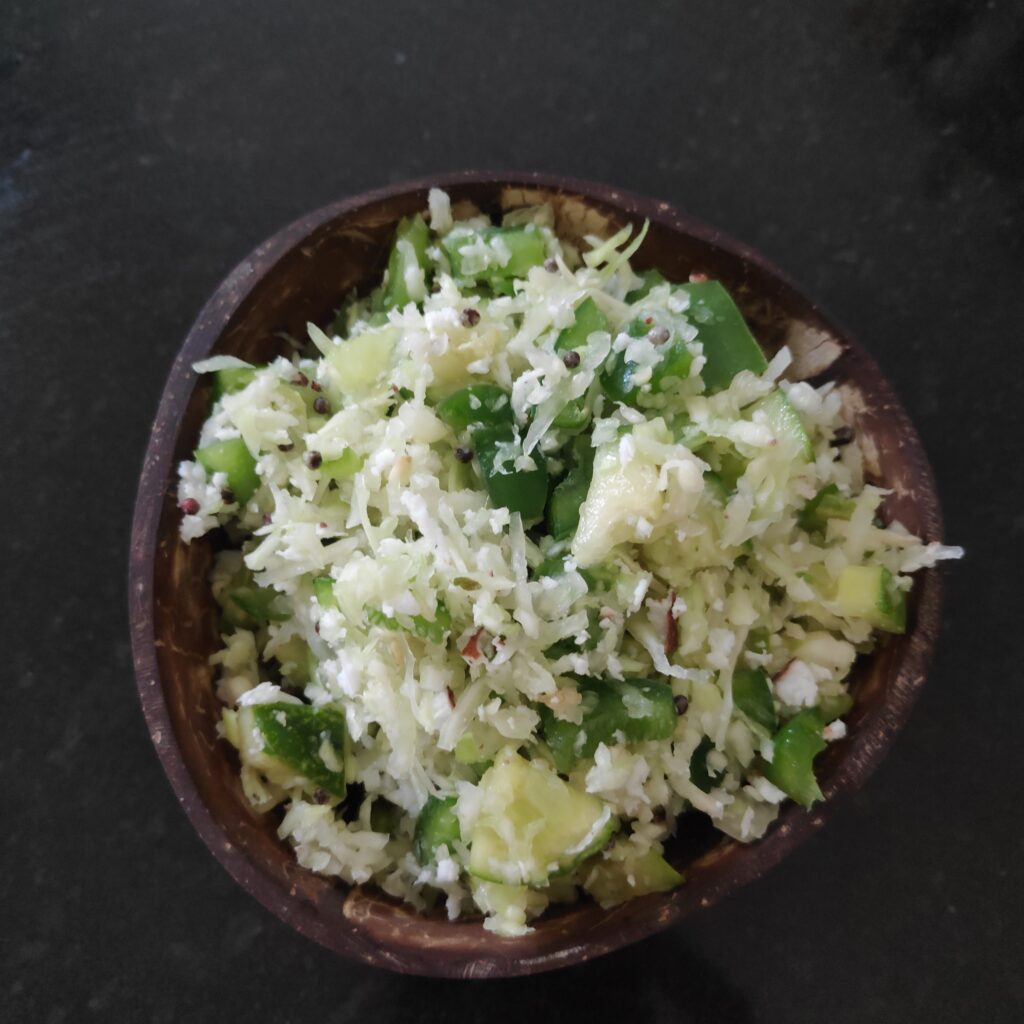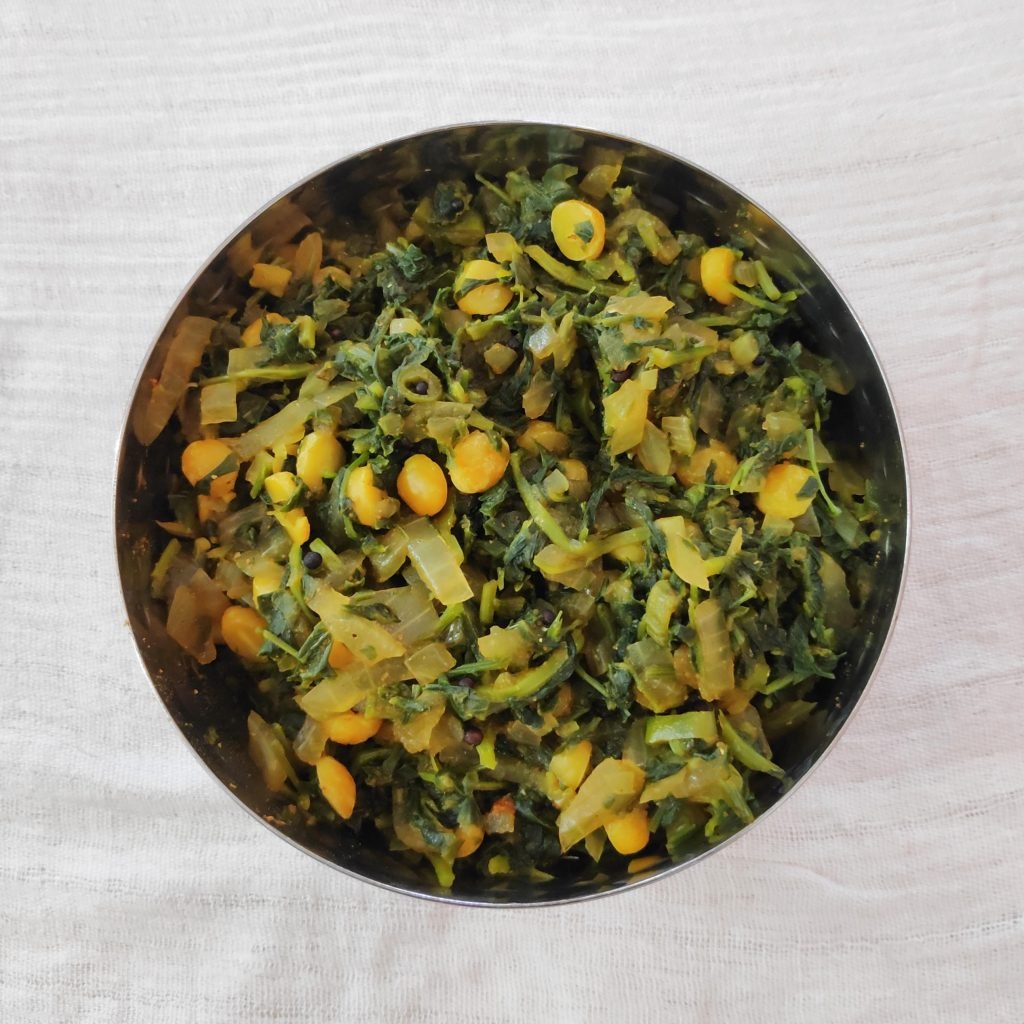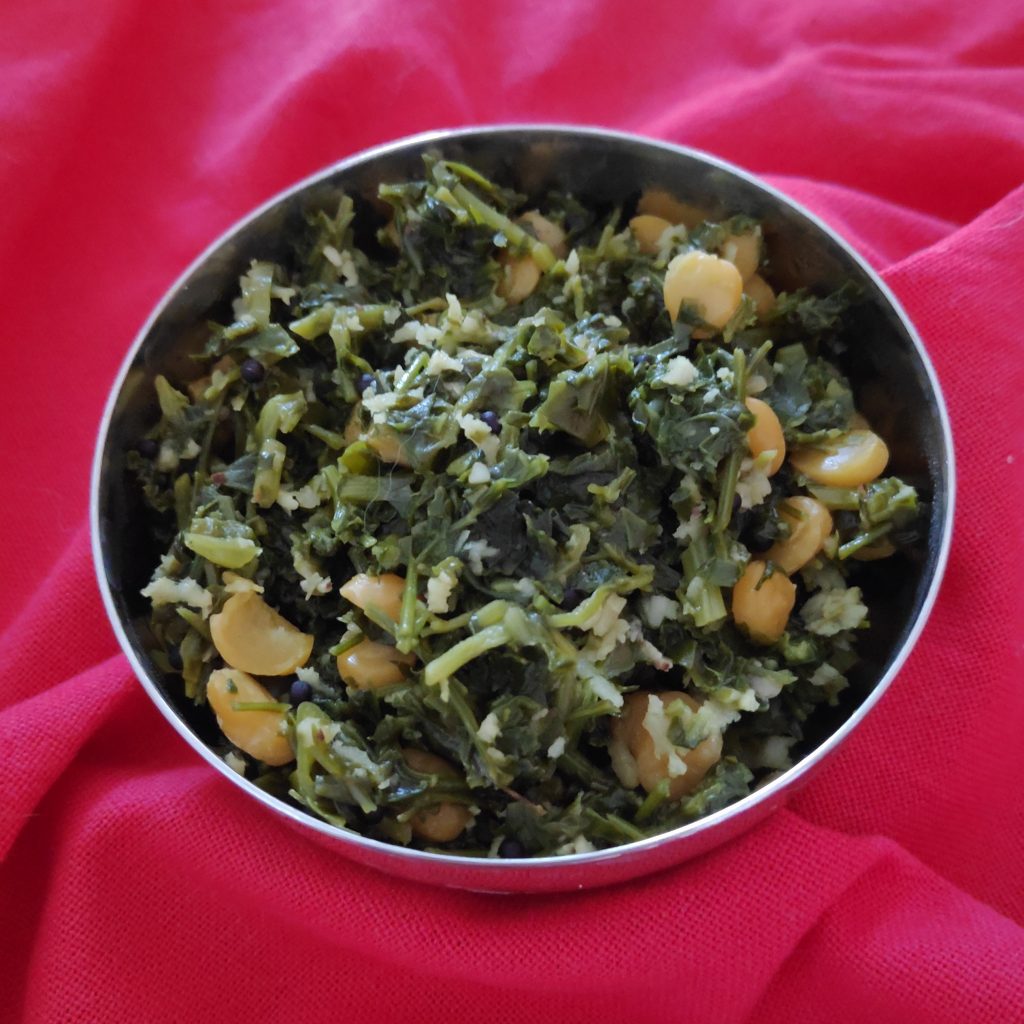
Mode Aleli Chawli Chi Bhaji with Onion and Tomato (Sprouted Black Eyed Peas Curry with Onion and Tomato)
Sprouted beans are more nutritious and they require much less cooking time. Sprouts are rich in digestible energy, vitamins, minerals, amino acids, proteins, and phytochemicals, as these are necessary for a germinating plant to grow and are also essential to human health. Sprouting breaks down complex compounds into a simpler form which is why sprouts are also called pre-digested foods. Sprouts provide a good supply of Vitamins A, E & C plus B complex which help in digestion and the release of energy. They are also essential for the healing and repair of cells. However, vitamins are very perishable and so fresh sprouts have a higher vitamin content. Some sprouts can yield vitamin contents 30 times higher than the dry bean.






